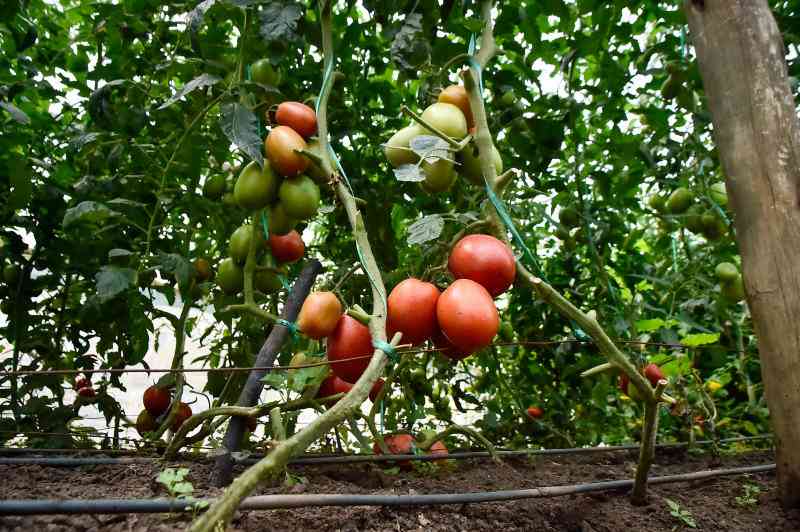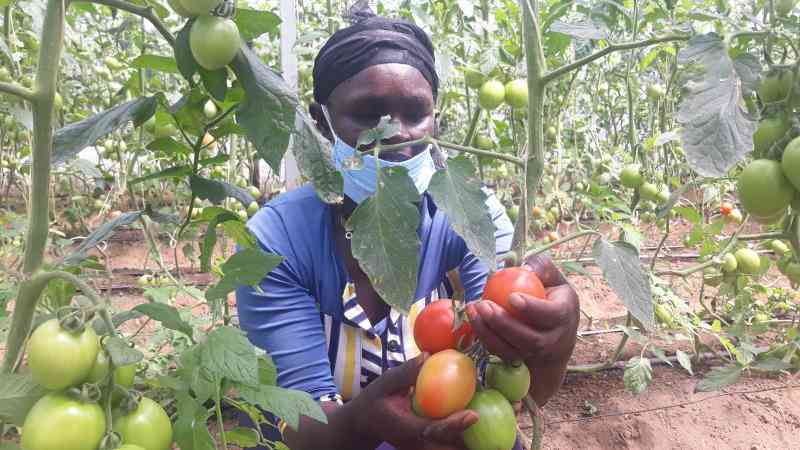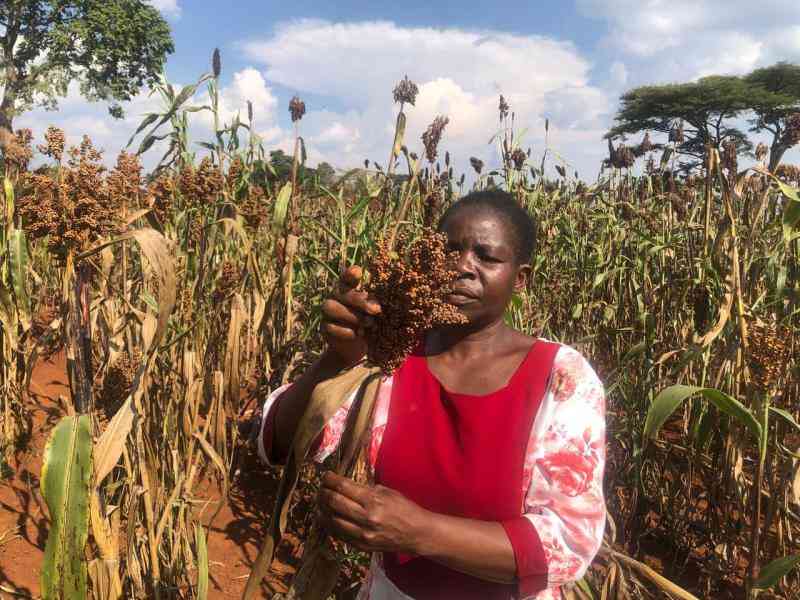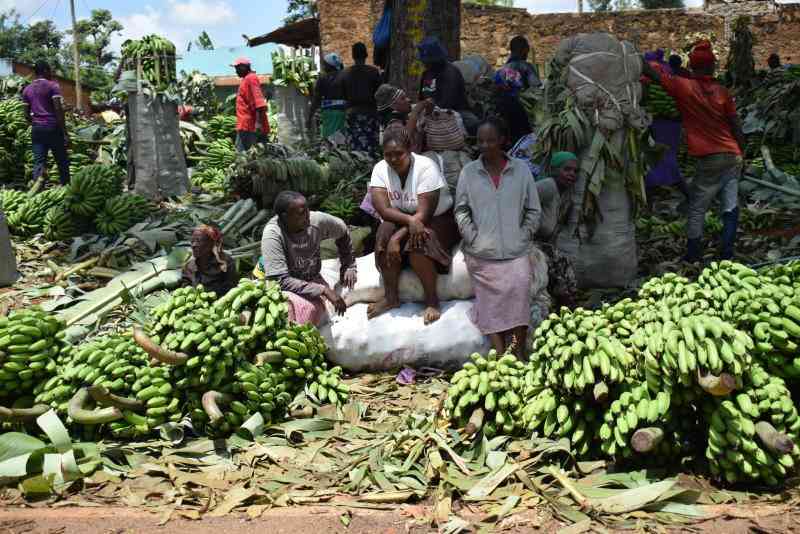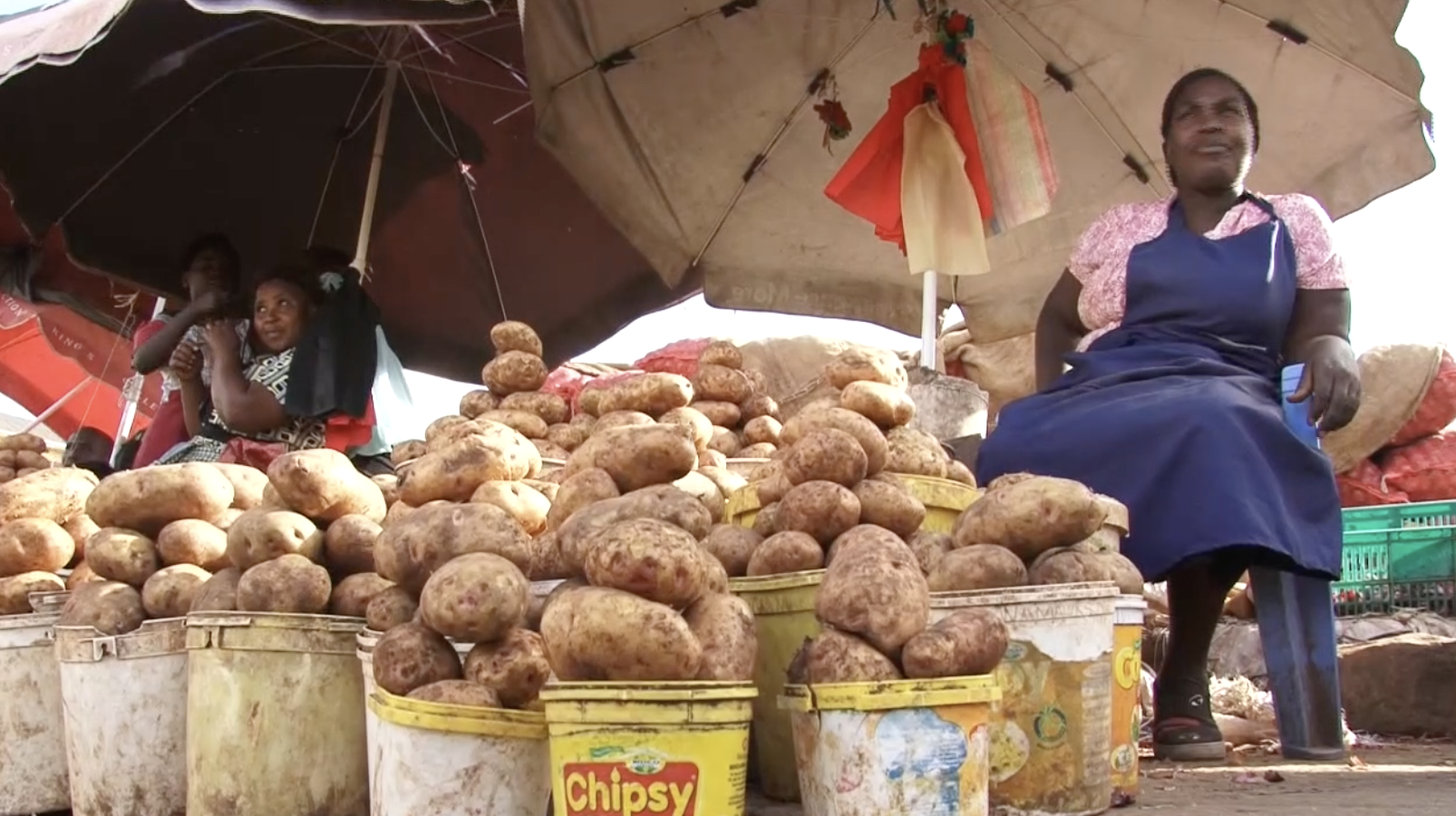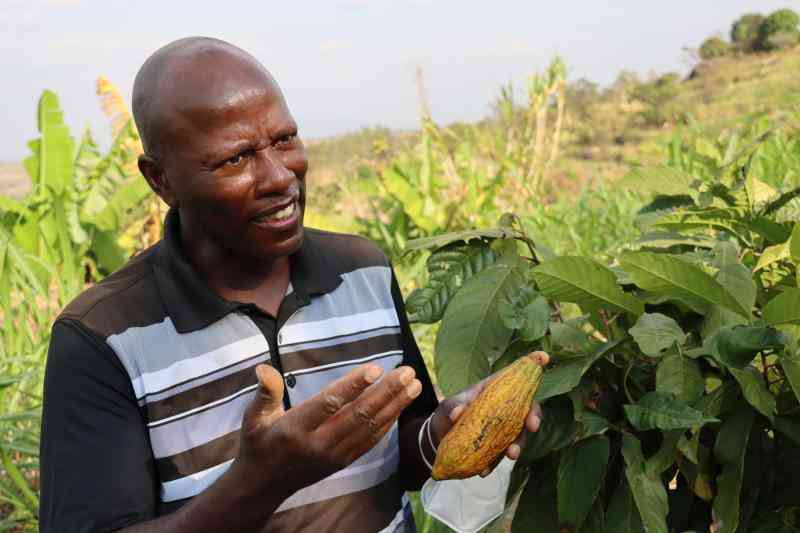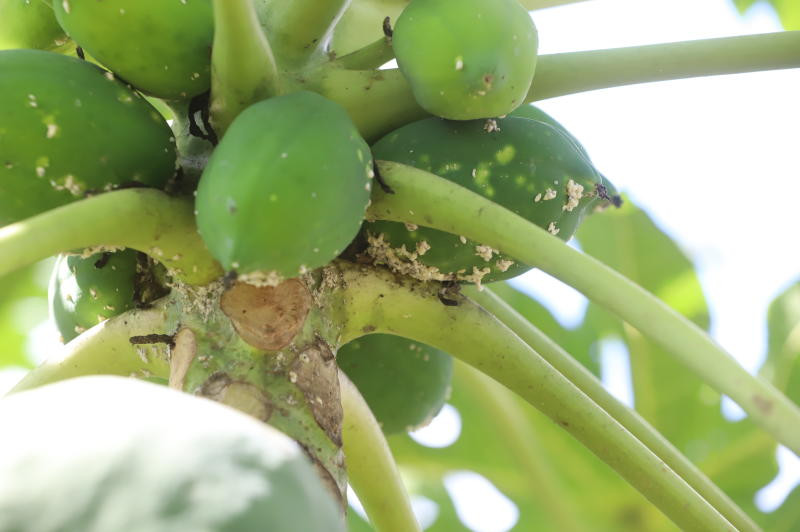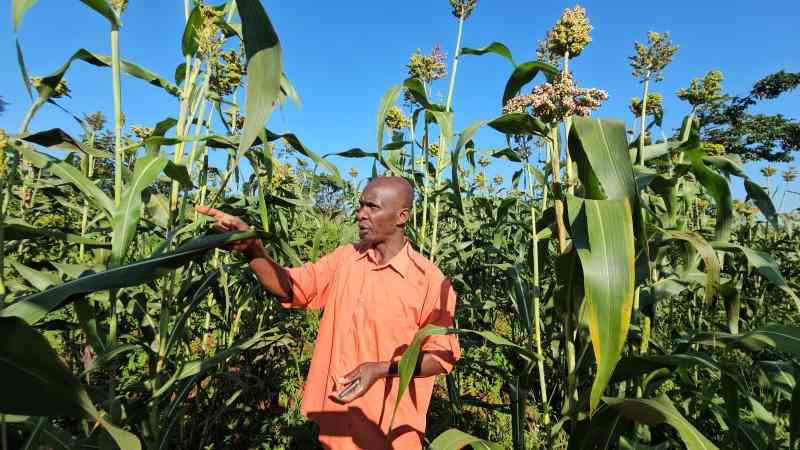
Edna Machuki on her finger millet farm at Kiobegi in Kisii County [Sammy Omingo, Standard]
The recent rise in the price of maize flour, popularly known in Kenya as unga, is a clear message to farmers, consumers, researchers and policymakers in our ailing food system.
The price of Sh210 per 2kg packet of maize flour is historic and has raised concerns in villages and towns as parents bear the burden of feeding their families amidst the Covid-19 pandemic, harsh climatic conditions and increasing cost of living.
The famous phrase 'serikali saidia' (the government should help) is back with a bang. Farms in the Central Rift Valley, Eastern, North Eastern, Central and Coastal parts of the country have withered maize, a clear picture of the deteriorating situation.
The rains, as predicted by the meteorological department, were below average and farmers, in despair, watch as their crops dry.
Food aid dispensed in these areas is below the food requirements of the households, but it is giving hope to mothers that their children have something little to eat in the hope for 'better' days ahead.
This will remain a dream as pressure for more food will mount and the maize crop is likely to fail due to extreme weather events. Unimaginable days of food and nutritional insecurity await them.
The question is, do we have other sources of carbohydrates that can substitute or complement maize?
It is surprising that other crops, which can be consumed to replace maize, have been left out in this discussion as alternatives.
Indigenous foods
Little focus has been put on cassava, sweet potatoes, arrow roots, bananas, cocoa yam, sorghum and millet.
These are indigenous foods well known in our respective cultures. Kenyan communities have rich traditional knowledge on the positive nutritional benefits of these indigenous foods when consumed by their community members.
Traditionally, these crops, with the exception of arrow roots, are known to withstand water stress compared to maize.
Thus, they provide a viable pathway and give hope to the affected population of sustainable solutions to enhance their ability and dignity in feeding themselves.
Farmers managed seed systems supply the highest percentage of these planting materials, yet it is not recognised or supported by the government.
Hence, farmers are left on their own in production and conserving the seeds. Community seed banks remain the only source of support for farmers.
The continued reality of agro-biodiversity loss and climate change calls for action to build the capacity of farmers to produce and conserve quality seeds.
Farming communities require this in order to diversify their diets and reduce over-reliance on maize.
Farmers managed seed systems thrive largely on seed saving, sharing and exchange, which also form part of cultural practices from different ethnic groups in Kenya.
But this practice is under threat from the punitive seed laws that seek to criminalise farmers for selling or sharing unregistered or uncertified seeds.
Limiting the rights of farmers to share, exchange and sell seeds in the informal seed sector will reduce diverse seed access, further aggravating food and nutritional insecurity in the country.
It is time we diagnose our food system and custom it with reality in Kenya. Little technical and financial support is allocated at national and county governments to support farmers to grow the crops.
Planting materials access and availability for the crops is a major bottleneck that can only encourage monocropping for maize.
The other alternative is from farmers, yet seed laws criminalise the farmers managed seed system which contributes over 80 per cent of the planting materials for these crops.
This leaves the population at a risk of food and nutritional insecurity. A wider genetic pool is vital to enhance crop diversification and diet diversity.
Value addition has also been skewed towards the maize crop, which is failing with little priority to these crops that are underutilised.
Nutritional insecurity
There is a little hope as there are emerging composite flours where these crops are milled.
This is evidence that we can have an alternative for unga and improve the wellbeing of the population.
The government needs to resurrect and fasten its efforts in providing guidelines for blending these flours in Kenya.
More consumer awareness on the benefits of diversifying their diets is needed by all relevant stakeholders.
The notion that some foods are 'inferior' or for a certain class of the population is exposing us to food and nutritional insecurity.
It is therefore our collective responsibility to join hands and contribute to the transformation of our food system by diversifying our crops and diets to insure ourselves against the increasing price of maize flour.
 The Standard Group Plc is a multi-media organization with investments in media platforms spanning newspaper print
operations, television, radio broadcasting, digital and online services. The Standard Group is recognized as a
leading multi-media house in Kenya with a key influence in matters of national and international interest.
The Standard Group Plc is a multi-media organization with investments in media platforms spanning newspaper print
operations, television, radio broadcasting, digital and online services. The Standard Group is recognized as a
leading multi-media house in Kenya with a key influence in matters of national and international interest.

